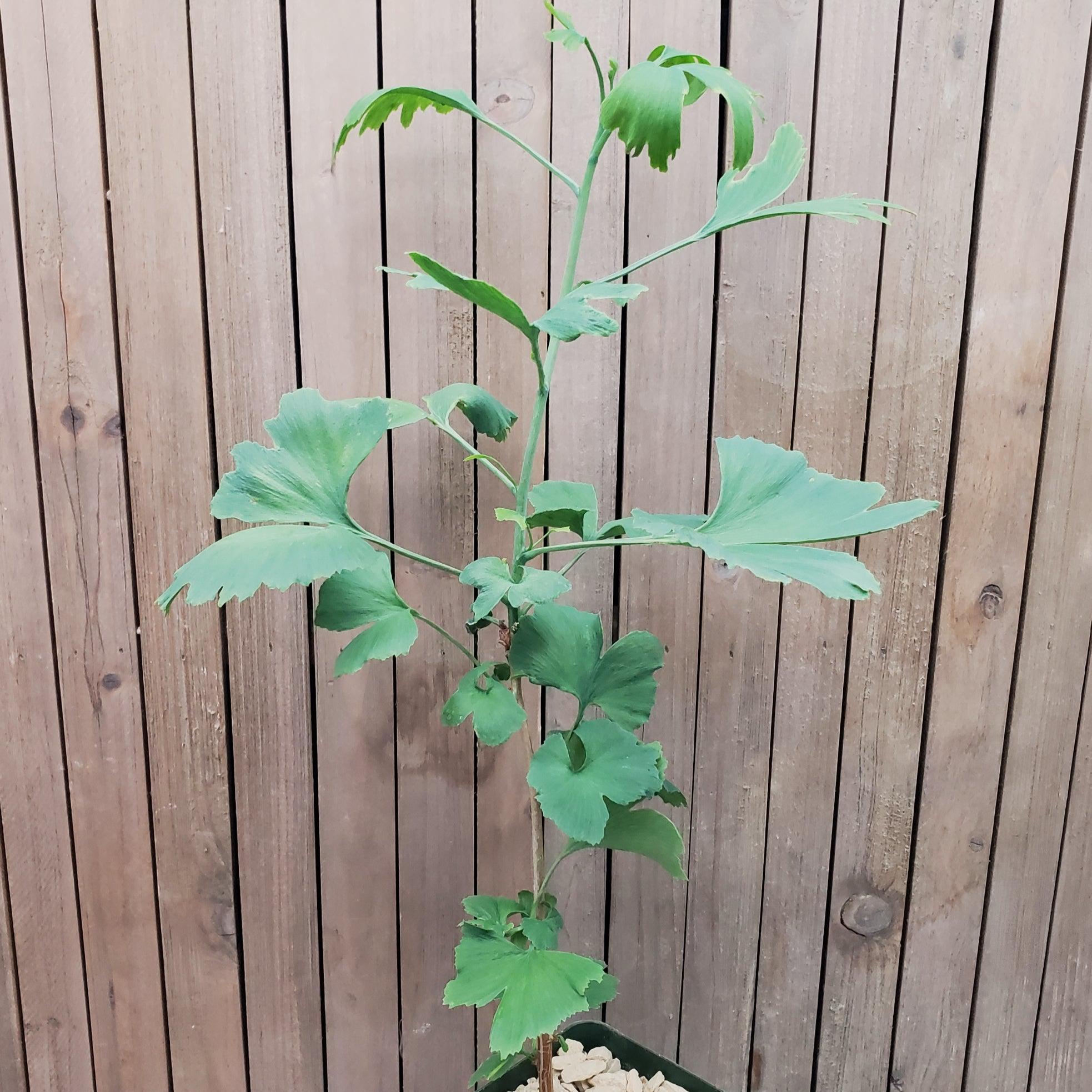Ginkgo biloba tree is a winter-dormant deciduous tree from the Ginkgoaceae family. This well-known street tree grows from 50 to 80 ft. in height and is adored for its attractive pyramid shape. Having its origin in China, this amazing prehistoric tree is widely recognized by its common name “Maidenhair tree”. Ginkgo biloba leaves are fan-shaped. They start out green but turn golden-yellow as the season progresses. Maidenhair tree growth rate is quite slow and it makes for a great choice for urban arrangements.
Growth Rate
Noted for its unusual fan-shaped leaves, the Ginkgo biloba tree is relatively slow-growing.
Flowering
During the spring flowering season, you can see eye-catching green-colored flowers. These colorful blossoms make Maidenhair tree images appealing.
Watering
If the ground is well-drained, water as required to keep your Ginkgo biloba plant healthy. Young Maidenhair trees need more moisture as compared to matured ones.
Soil
Unlike other trees, Ginkgo biloba is a large deciduous tree that is quite undemanding. You can grow Maidenhair ginkgo tree either in acidic or alkaline soil and even compacted soil. Interestingly, these hardy shade trees can tolerate compacted soil better than many other tree species.
Hardiness
Maidenhair tree belongs to the hardiness zone of 4 to 9. Besides, it can tolerate low temperatures up to -40°C (-40°F) if it is well planted in one location.
Light
Ginkgo biloba trees prefer full sun to partial shade. For best results, place your Ginkgo maidenhair tree in a sunny spot for a few hours each day.
Propagation
Propagating this variety is possible through cuttings or seeds. Dealing with Maidenhair tree seeds can be more challenging than cuttings.
The Maidenhair tree facts are truly fascinating. One of these is that it is considered sacred in Japan and is grown around temples. The Ginkgo biloba maidenhair tree is considered to be the world's oldest living tree.
Growers Quick Reference Guide - Key Features
- Description
- Key Plant Features
Ginkgo biloba tree is a winter-dormant deciduous tree from the Ginkgoaceae family. This well-known street tree grows from 50 to 80 ft. in height and is adored for its attractive pyramid shape. Having its origin in China, this amazing prehistoric tree is widely recognized by its common name “Maidenhair tree”. Ginkgo biloba leaves are fan-shaped. They start out green but turn golden-yellow as the season progresses. Maidenhair tree growth rate is quite slow and it makes for a great choice for urban arrangements.
Growth Rate
Noted for its unusual fan-shaped leaves, the Ginkgo biloba tree is relatively slow-growing.
Flowering
During the spring flowering season, you can see eye-catching green-colored flowers. These colorful blossoms make Maidenhair tree images appealing.
Watering
If the ground is well-drained, water as required to keep your Ginkgo biloba plant healthy. Young Maidenhair trees need more moisture as compared to matured ones.
Soil
Unlike other trees, Ginkgo biloba is a large deciduous tree that is quite undemanding. You can grow Maidenhair ginkgo tree either in acidic or alkaline soil and even compacted soil. Interestingly, these hardy shade trees can tolerate compacted soil better than many other tree species.
Hardiness
Maidenhair tree belongs to the hardiness zone of 4 to 9. Besides, it can tolerate low temperatures up to -40°C (-40°F) if it is well planted in one location.
Light
Ginkgo biloba trees prefer full sun to partial shade. For best results, place your Ginkgo maidenhair tree in a sunny spot for a few hours each day.
Propagation
Propagating this variety is possible through cuttings or seeds. Dealing with Maidenhair tree seeds can be more challenging than cuttings.
The Maidenhair tree facts are truly fascinating. One of these is that it is considered sacred in Japan and is grown around temples. The Ginkgo biloba maidenhair tree is considered to be the world's oldest living tree.




















































